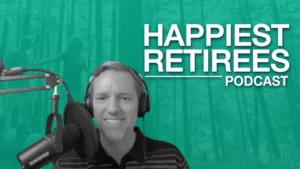As an investment advisor and CERTIFIED FINANCIAL PLANNERTM with Capital Investment Advisors, I get to hear a variety of financial concerns on the daily. Recently, those concerns have centered on provisions for retirement accounts in the Coronavirus Aid, Relief, and Economic Security (CARES) Act.
The questions: “Everett, what are the rules around the required minimum distributions (RMDs) “put-backs,” or returns related to COVID-19? And what are the updated rules for 401(k)s?”
I’m sure many of you are trying to understand both issues thoroughly. It can be especially tricky with all of the updates and changes these rules have undergone since CARES was first enacted. While the new guidelines have simplified the original ones, they can still be confusing.
I’m here to help you understand what the CARES rules are and what they could mean for you.
As I begin, I want to point out that while I am a CFP®, I am not a CPA or tax advisor. So, it’s important to consult a tax advisor for your own situation as it relates to taxes. This point is especially true because of the time-sensitive nature of some of the provisions of CARES. For RMDs, the 60-day rollover period for any distribution already taken this year has been extended to August 31, 2020. So, time could be of the essence with tax planning.
We’ll start our dissection of CARES with provisions around RMDs.
Under CARES, the mandatory withdrawals have been waived for all of 2020! This provision allows Americans more flexibility as to when, how, and if, they decide to take their RMDs. It also allows their IRA portfolios more time to recover from the drop in their investments from February’s market highs to the market’s sizable downturn on March 23 of this year.
Now, CARES was passed on March 27 of this year, which is great because it gave people a long period of relief from RMDs. But what about those that had already taken their distributions?
The CARES Act and subsequent updates from the IRS, say that these people can “return” unwanted or unneeded RMDs. The reasoning behind this provision is that some people may have taken distributions they didn’t want or need to make, and they should be able to put these unwanted RMDs back in their qualified retirement accounts.
Here are some of the high points of making RMD returns.
First and foremost, it’s crucial that you know that when replacing an RMD, you must put the RMD and the taxes that were already withheld back. In other words, you must replace the entire RMD. This is to avoid any potential tax consequences of the return, as it may be considered a “taxable distribution” otherwise.
A handful of investors have said, “Everett, I already sent part of my RMD to the IRS. How can I get the IRS to send me the money back so I can return that portion to the IRA?” The answer is you cannot! It’s that simple.
Believe me. I understand the sentiment. But look at it this way: The RMD was distributed from your IRA, and you may have chosen to automatically send Uncle Sam his slice of the pie. This immediate withholding could be seen as a convenience so you don’t have to worry about it come tax time. (This would have been acceptable every year before 2020, and in 2020 too if you do not want to replace your RMD.)
Then (and here’s the good part), when it is time to file taxes, if you made an RMD return, you can indicate it on your IRS filing. The tax payment you made on your RMD should then offset the taxes you owe for 2020. So, that’s how you get your money back.
Another option on the table, thanks to CARES, is to convert your RMDs into a Roth IRA. This choice usually isn’t available, but under the ACT, an exception has been made for 2020. Just remember, this would still be a fully taxable strategy in the beginning. But the gains you get from your Roth are tax-free!
Now that we’ve covered the RMD rules let’s dissect the 401(k) CARES provisions.
The maximum amount of a loan from your 401(k) has increased in 2020 – up to $100,000 or double the typical $50,000 amount. And, 100% of your vested balance may be used.
Under the traditional rules, you can only take a loan once your vested plan balance exceeded $20,000. And then, you could only take out 50% of that amount as a loan. For 2020, the CARES Act amended this rule to allow dollar-for-dollar loans equal to vested plan balances. As for payments on these plan loans, payments may be delayed through the end of 2020.
For early withdrawals from your retirement accounts, the 10% penalty that usually applies has been waived for 2020. This is true for many types of retirement plans – not just your 401(k). The distributions you take from 401(k)s are not currently subject to the mandatory withholding requirement of 20% for federal tax. (To be clear, this does not mean the tax is waived, but rather that it is not automatically withheld.)
These distributions can be repaid over the next three years. And, reported income from the distributions can be spread over three years (2020, 2021, 2022)!
So, there you have it. I hope that this discussion and breakdown of two of the major provisions of the CARES Act helps inform your decisions about how to handle your RMDs and how to treat your 401(k) account. Remember to run any strategy you have by a tax professional to make sure your plan is sound for your yearly filings. If you need any additional information on these provisions of CARES, please reach out to our team at Capital Investment Advisors. We are always happy to help.
Read the original article here.
Related Video:
Everett Wilkerson is a member of the Money Matters team and an investment advisor and CERTIFIED FINANCIAL PLANNERTM at Capital Investment Advisors. You can reach out to him or any of our advisors by e-mailing info@yourwealth.com
This information is provided to you as a resource for informational purposes only. It is being presented without consideration of the investment objectives, risk tolerance or financial circumstances of any specific investor and might not be suitable for all investors. Past performance is not indicative of future results. Investing involves risk including the possible loss of principal. This information is not intended to, and should not, form a primary basis for any investment decision that you may make. The information contained in this piece is not considered investment advice or recommendation or an endorsement of any particular security. Further, the mention of any specific security is solely provided as an example for informational purposes only and should not be construed as a recommendation to buy or sell. Always consult your own legal, tax or investment advisor before making any investment/tax/estate/financial planning considerations or decisions.










